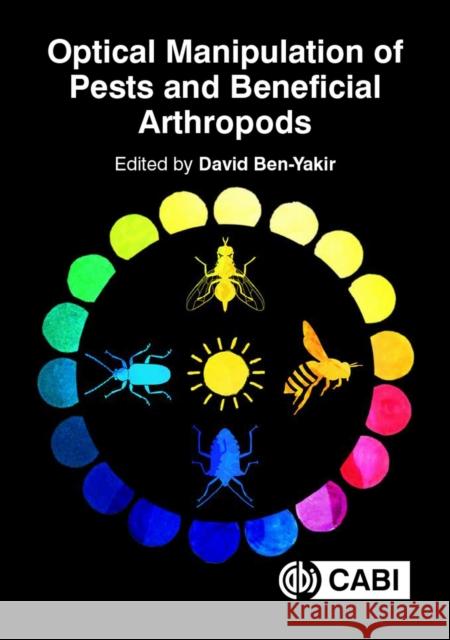Optical Manipulation of Pests and Beneficial Arthropods » książka
Optical Manipulation of Pests and Beneficial Arthropods
ISBN-13: 9781786394705 / Angielski / Twarda / 2020 / 192 str.
Arthropod pests, pollinators, and natural enemies of pests have a great economic importance to human health and food supply worldwide. Arthropods use optical cues to find food and suitable oviposition sites, daily and seasonal activities, orientation and navigation. Most arthropods have compound eyes with receptors for UV light (peak sensitivity at 360 nm) and for green-yellow light (peak sensitivity at 520-540 nm). Many arthropods also have simple eyes (ocelli) that respond to changes in light intensity. Some arthropods can detect linearly polarized light and use it as an optical cue for oviposition sites, finding of hosts and navigation.The properties of the optical cue, such as wavelength, intensity, polarization, size, shape and contrast, greatly affect their response to the optical cue. Therefore, manipulation of optical cues can interfere or enhance arthropods' activities and development. UV light has been used to attract insects for monitoring and control. The patterns of UV reflected from flowers and plants affect arthropods' preference to visit them. The absence of UV light often deters arthropods and decreases their dispersal rate. UVB induces general stress in plants which may increase their resistance to arthropod pests. Green-yellow color induces landing and favors settling (arresting) of many plant feeding arthropods. High levels of reflected sunlight (above 25% of sun radiation) deters arthropods' landing and reduces settling. The recent use of monochromatic lights to increase crop yield, or to induce desirable plant characteristics, is expected to affect the activity of the associated arthropds as well. Optical manipulations are proposed as a part of an integrated pest management (IPM) program for open-field and protected crops, and for protecting the health of humans and domestic animals. This book contains up-to-date reviews of the published literature, some unpublished results of the authors, and suggestions for future research and development of this method.











